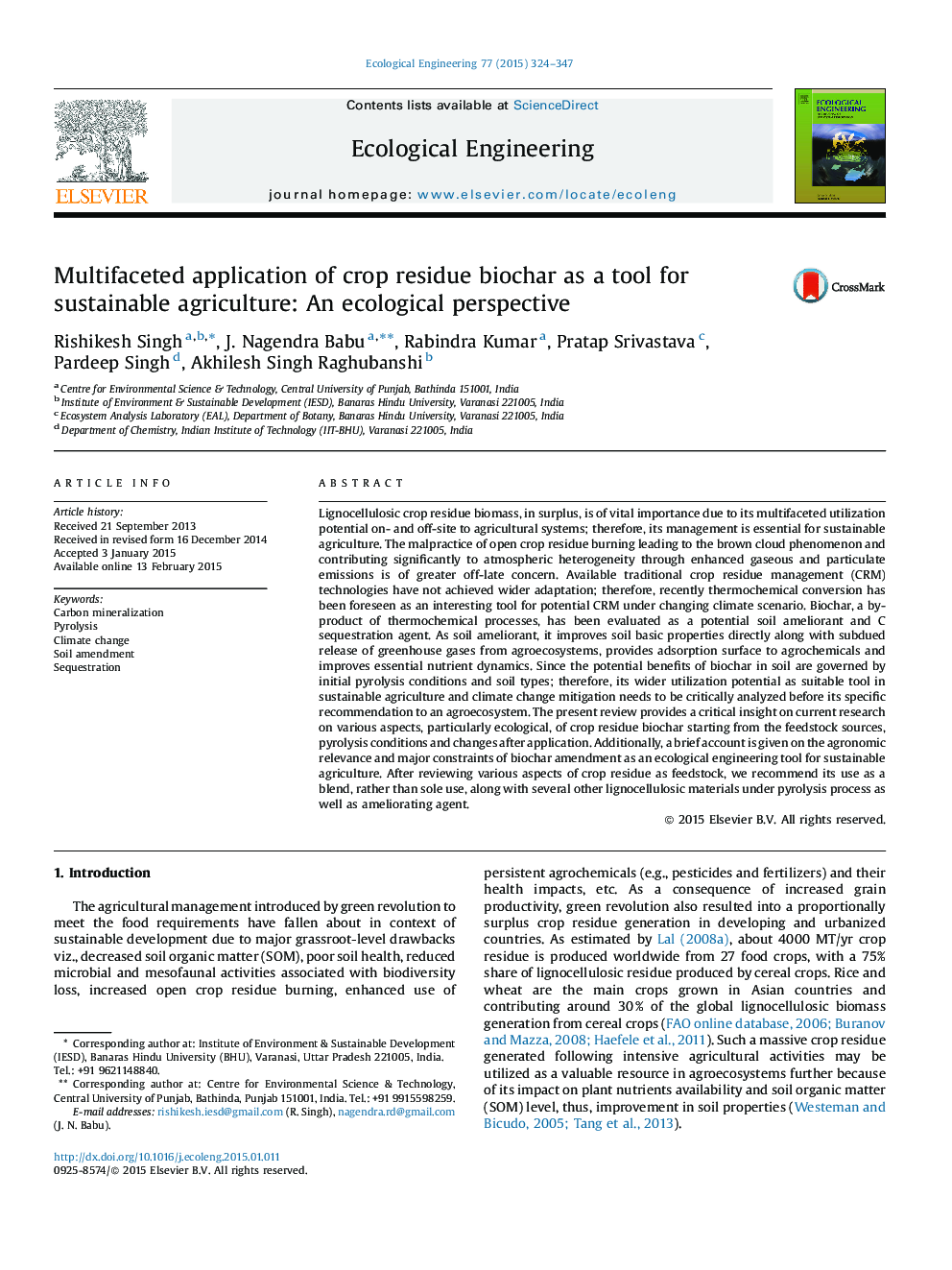| کد مقاله | کد نشریه | سال انتشار | مقاله انگلیسی | نسخه تمام متن |
|---|---|---|---|---|
| 4389279 | 1618022 | 2015 | 24 صفحه PDF | دانلود رایگان |
Lignocellulosic crop residue biomass, in surplus, is of vital importance due to its multifaceted utilization potential on- and off-site to agricultural systems; therefore, its management is essential for sustainable agriculture. The malpractice of open crop residue burning leading to the brown cloud phenomenon and contributing significantly to atmospheric heterogeneity through enhanced gaseous and particulate emissions is of greater off-late concern. Available traditional crop residue management (CRM) technologies have not achieved wider adaptation; therefore, recently thermochemical conversion has been foreseen as an interesting tool for potential CRM under changing climate scenario. Biochar, a by-product of thermochemical processes, has been evaluated as a potential soil ameliorant and C sequestration agent. As soil ameliorant, it improves soil basic properties directly along with subdued release of greenhouse gases from agroecosystems, provides adsorption surface to agrochemicals and improves essential nutrient dynamics. Since the potential benefits of biochar in soil are governed by initial pyrolysis conditions and soil types; therefore, its wider utilization potential as suitable tool in sustainable agriculture and climate change mitigation needs to be critically analyzed before its specific recommendation to an agroecosystem. The present review provides a critical insight on current research on various aspects, particularly ecological, of crop residue biochar starting from the feedstock sources, pyrolysis conditions and changes after application. Additionally, a brief account is given on the agronomic relevance and major constraints of biochar amendment as an ecological engineering tool for sustainable agriculture. After reviewing various aspects of crop residue as feedstock, we recommend its use as a blend, rather than sole use, along with several other lignocellulosic materials under pyrolysis process as well as ameliorating agent.
Journal: Ecological Engineering - Volume 77, April 2015, Pages 324–347
